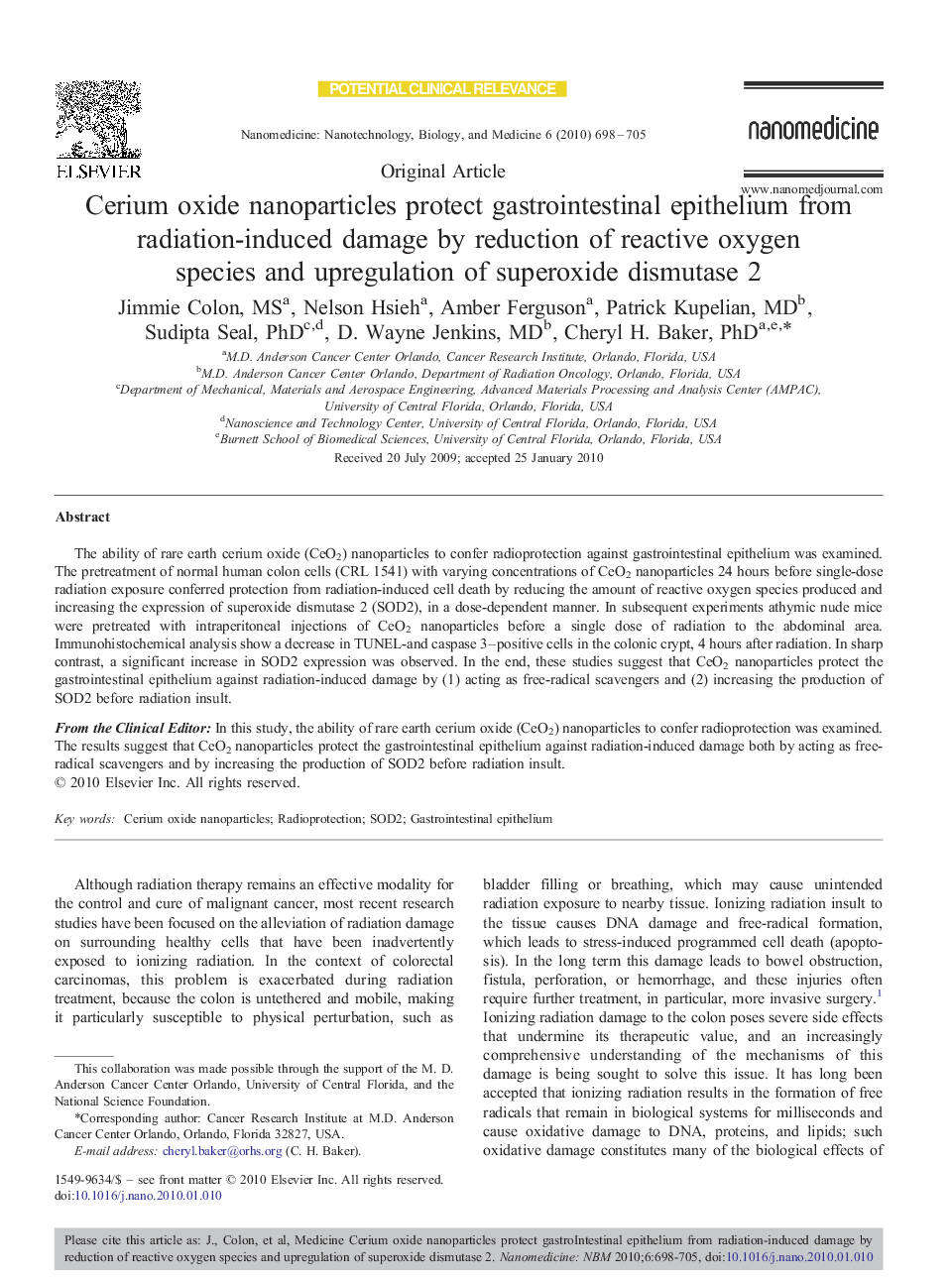| کد مقاله | کد نشریه | سال انتشار | مقاله انگلیسی | نسخه تمام متن |
|---|---|---|---|---|
| 878195 | 911068 | 2010 | 8 صفحه PDF | دانلود رایگان |

The ability of rare earth cerium oxide (CeO2) nanoparticles to confer radioprotection against gastrointestinal epithelium was examined. The pretreatment of normal human colon cells (CRL 1541) with varying concentrations of CeO2 nanoparticles 24 hours before single-dose radiation exposure conferred protection from radiation-induced cell death by reducing the amount of reactive oxygen species produced and increasing the expression of superoxide dismutase 2 (SOD2), in a dose-dependent manner. In subsequent experiments athymic nude mice were pretreated with intraperitoneal injections of CeO2 nanoparticles before a single dose of radiation to the abdominal area. Immunohistochemical analysis show a decrease in TUNEL-and caspase 3–positive cells in the colonic crypt, 4 hours after radiation. In sharp contrast, a significant increase in SOD2 expression was observed. In the end, these studies suggest that CeO2 nanoparticles protect the gastrointestinal epithelium against radiation-induced damage by (1) acting as free-radical scavengers and (2) increasing the production of SOD2 before radiation insult.From the Clinical EditorIn this study, the ability of rare earth cerium oxide (CeO2) nanoparticles to confer radioprotection was examined. The results suggest that CeO2 nanoparticles protect the gastrointestinal epithelium against radiation-induced damage both by acting as free-radical scavengers and by increasing the production of SOD2 before radiation insult.
Journal: Nanomedicine: Nanotechnology, Biology and Medicine - Volume 6, Issue 5, October 2010, Pages 698–705